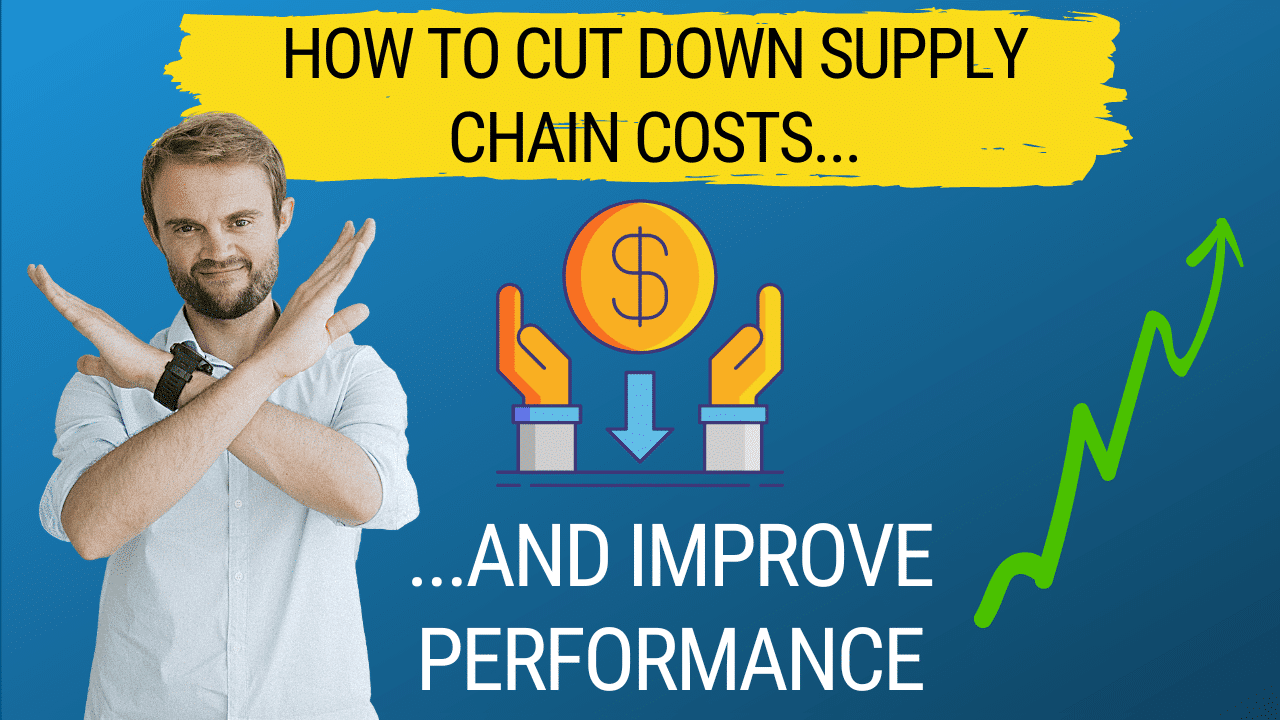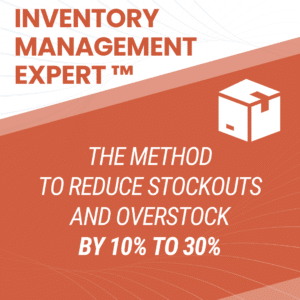Getty Effective supply chain planning is critical to business growth and can affect everything from customer satisfaction to profits.
As a global supply chain continues to be complex, companies must streamline operations to lower costs. To improve supply chain performance, you must not simply reduce costs. It combines sourcing and production with logistics and distribution.
So, if you’d like a few tips on how to cut down supply chain costs and improve its performance, keep reading.

Introduction to Supply Chain Management and Supply Chain Cost Optimization
Supply chain management refers to coordinating and managing all activities involved in the flow of goods, from raw materials to finished products. Effective management of supply chains is critical to businesses aiming to meet customer demands while maintaining a balance between costs and efficiency.
Supply chain costs, encompassing inventory, transportation, warehousing, and more, constitute a significant portion of a company’s expenses. For instance, inventory costs can skyrocket if products are not sold within a specific timeframe, leading to obsolescence and waste. Transportation costs also fluctuate based on fuel prices, routing inefficiencies, and logistics hurdles.
For these reasons, supply chain cost optimization becomes a vital strategy. To improve supply chain cost optimization, companies use a variety of tactics, such as:
Implementing effective inventory management systems to control holding and ordering costs.
Using historical data to forecast demand accurately, reducing overproduction and excess stock.
Negotiating with suppliers for better pricing or delivery terms.
Many supply chain managers and directors continuously explore innovative ways to cut costs without compromising product or service quality. Their primary goal is to reduce costs and enhance performance by making data-driven decisions. Supply Chain cost optimization isn’t a one-time effort but a continuous process that requires strategic planning, execution, and constant monitoring. By understanding and applying these principles, businesses can gain a competitive edge, serve their customers better, and ultimately, boost their overall performance.
Understanding the Importance of Efficient Supply Chain Operations

Efficient supply chain operations play a pivotal role in your business’s success. They directly impact key operating outcomes such as cost minimization, customer satisfaction, and revenue growth. Here are some reasons why:
Cost Optimization: An optimized supply chain reduces costs at every step – from procuring raw materials to manufacturing processes and transportation. For example, strategic planning for inventory management can cut supply chain costs significantly by ensuring the right quantity of products is produced and held, reducing waste and storage costs.
Customer Satisfaction: Efficient supply chains help meet customer demand promptly and accurately. Using real-time data and predictive analytics for demand forecasting enables businesses to align production and distribution with customer needs, increasing satisfaction.
Long-Term Business Value: Most supply chains that use advanced analytics and historical data for supply chain planning deliver long-term business value. These data-driven insights help supply chain leaders identify performance potential and optimize supply chain costs for sustainable financial health and growth.
Cost Implications of an Inefficient Supply Chain
As you can imagine, an inefficient supply chain can severely impact your company’s financial performance and customer satisfaction. Here’s how:
Increased Supply Chain Costs: Poor inventory management can lead to high inventory costs due to excess or shortage. For example, a shortage might necessitate expensive, last-minute transportation or manufacturing. Functionally focused strategies that lack a holistic view of the entire supply chain also add unnecessary costs.
Lost Business Value: Supply chain inefficiencies can lead to missed revenue opportunities and potential damage to the brand’s reputation. For instance, the inability to meet customer demand due to inefficient supply chain operations could result in lost sales and dissatisfied customers.
Reduced Financial Performance: The overall cost of an inefficient supply chain extends beyond immediate operational expenses. Senior supply chain executives must contend with reduced cost savings, hindering overall financial performance and revenue growth.

Therefore, an efficient supply chain is crucial for cost reduction, improving customer satisfaction, and aligning business with market dynamics. It’s essential for supply chain executives and key stakeholders to continually assess and optimize their supply chain, leveraging data-driven insights and strategic planning to unlock maximum business value.
Techniques to Streamline Your Supply Chain
Streamlining the supply chain is a strategic necessity for businesses. It helps reduce costs and aligns business operations with market demand, enhancing customer satisfaction and revenue growth. Here are key techniques to optimize supply chain costs:
Implementing Lean Manufacturing Principles
Lean manufacturing aims to eliminate waste and enhance efficiency. It can streamline the supply chain by:
Inventory Reduction: Lean principles focus on producing just what is necessary, reducing inventory levels and costs. For instance, Toyota’s Just-in-Time production is a well-known example of lean manufacturing that minimizes waste.
Enhanced Quality: Lean manufacturing enhances product quality by continuously improving and reducing defects. This results in fewer returns and cost savings.

Reducing Waste in the Production Process
Minimizing waste is critical to efficient supply chain operations. Here’s how it can be done:
Process Improvement: Identify and eliminate non-value-adding steps in manufacturing, reducing overall cost. For example, a company can replace manual data entry with automated systems to reduce errors and save time.
Resource Optimization: Utilize raw materials more efficiently and reduce waste. For example, in-house recycling of scraps can help.
Streamlining Supply Chain Processes
Streamlining processes can lead to significant supply chain cost reduction. Here are some ways to achieve this:
Advanced Analytics: Using real-time data, predictive analytics, and historical data can optimize supply chain planning and operations, cutting costs significantly.
Collaboration: Companies can ensure smoother supply chain operations by aligning with key stakeholders like suppliers and distributors. For instance, sharing demand forecasting data with suppliers can help them plan better, ensuring the right quantity of raw materials.
By implementing these techniques, supply chain executives can improve the company’s financial performance, ensuring long-term business value and cost minimization.
Advancements in Technology for Supply Chain Efficiency
Technology plays a crucial role in enhancing the efficiency of supply chains, which in turn can reduce costs and improve customer satisfaction. With the rise of artificial intelligence and blockchain technology, let’s see how these new technologies can contribute:
Utilizing Artificial Intelligence in Supply Chain Management

Artificial Intelligence (AI) has vast potential to streamline supply chains and optimize costs. It can help with :
Predictive Analytics: AI algorithms can process massive amounts of historical data to accurately forecast customer demand, thereby optimizing inventory levels and reducing costs associated with overstocking or understocking.
Intelligent Automation: AI can automate numerous processes within the supply chain. For instance, AI-powered warehouse robots can optimize picking and packing processes, reducing labor costs and increasing efficiency.
Transportation and Logistics: AI can optimize routing for transportation, thereby reducing fuel costs and improving delivery times, contributing to customer satisfaction.
Leveraging Blockchain for Traceability and Transparency
I mentioned this in a previous article: Blockchain technology can provide significant advantages in supply chain management:
Traceability: Blockchain can provide a secure, unalterable record of a product’s journey through the supply chain. This traceability from raw materials to finished goods can help identify quality issues, reduce waste, and cut costs associated with recalls or returns.
Transparency and Trust: A blockchain-based supply chain enhances transparency, which can build trust with customers and key stakeholders. For instance, consumers can verify the authenticity of a product, and suppliers can ensure payment upon completion of contractual milestones.
Efficiency: Blockchain can automate various administrative processes in the supply chain, such as contracts and payments, through smart contracts, resulting in increased efficiency and cost reduction.
By embracing such technological advancements, supply chain executives can optimize the entire supply chain, leading to cost savings, improved customer satisfaction, and long-term business value.
Building Strong Vendor and Supplier Relationships to optimize your supply chain cost

As you probably know, strong vendor and supplier relationships are crucial for optimizing supply chain costs. It can lead to:
Cost Savings: Collaborative relationships can help negotiate better pricing, reduce transportation costs, and optimize inventory management. For instance, a mutually beneficial contract with a raw material supplier can ensure the right stock quantity, reducing inventory costs.
Reliability: A trustworthy supplier can consistently meet deadlines, enhancing the entire supply chain’s efficiency and customer satisfaction.
Innovation: Vendors can provide valuable insights and innovative solutions for reducing supply chain costs. For example, a logistics provider might offer a more cost-effective transportation method.
Supply chain executives should prioritize these relationships as a key part of their strategic planning to optimize costs and improve overall financial performance.
Working together toward Improving Supply Chain Cost: Training and Development for Staff
Investing in training and development for supply chain personnel is a key strategy to optimize supply chain costs. It will lead to :
Skills Enhancement: Training on advanced analytics, demand forecasting, or inventory management can equip staff with the tools to optimize processes and cut costs.
Understanding Best Practices: Workshops about lean principles or cost-reduction strategies can help personnel reduce waste and increase efficiency.
Encouraging a Culture of Continuous Improvement
Promoting a culture of continuous improvement can lead to cost savings:
Process Innovation: Regular team reviews can uncover process enhancements and cost optimization opportunities.
Employee Engagement: Engaged employees are more likely to contribute ideas for improvement, reducing supply chain costs.

Senior supply chain executives should lead these initiatives, reinforcing the importance of cost optimization and continuous organizational improvement.
Monitoring and Evaluating Supply Chains Performance
Monitoring and evaluating the performance of supply chains is pivotal in cost optimization. Real-time data, advanced analytics, and predictive modeling can offer valuable insights into supply chains’ operational efficiency and cost-effectiveness.
For instance, a comprehensive review of transportation costs might reveal opportunities for route optimization or consolidation of shipments, leading to significant cost savings. Similarly, evaluating inventory levels against customer demand can expose overstocking or understocking issues, enabling cost minimization through better inventory management.

Key Performance Indicators (KPIs) for Supply Chain Management
KPIs are vital for assessing supply chain performance. These metrics provide a quantitative means of measuring efficiency and cost-effectiveness, aiding supply chain leaders in strategic planning and decision-making. Some crucial KPIs include:
Inventory Turnover: This indicates how often inventory is sold and replaced in a specific period. Higher turnover can mean better sales and lower holding costs.
Order Fulfillment Cycle Time: This measures the time taken from receiving an order to delivering it. Shorter cycles can enhance customer satisfaction and reduce storage costs.
Supply Chain Cost per Unit: This assesses the overall cost of moving a unit of a product through the supply chain. Lower costs per unit signify more efficient operations.
Perfect Order Rate: This reflects the percentage of orders that meet key delivery benchmarks. A higher perfect order rate implies fewer returns, replacements, or corrections, reducing supply chain costs.
By meticulously monitoring and evaluating these KPIs, supply chain executives can pinpoint areas of inefficiency, implement cost-reduction strategies, and ultimately enhance the business’s financial performance.
I have written many articles on the use of KPIs for your business. You can find them all here.
Conclusion: The Path Towards Improving Your Supply Chain Cost
Optimizing supply chain costs is crucial for any business’s financial health. By embracing advanced technologies, fostering strong vendor relationships, investing in staff development, and monitoring key performance indicators, organizations can make significant strides towards a more efficient, cost-effective supply chain, boosting their overall business value.
Become a Supply Chain Management Expert
If you want to go to the next level, join my 7-day workshop (free): “Analyze your Supply Chain and become finally efficient.“
7 days of free advice to boost your supply chain performance:
- Gain visibility into your supply chain.
- Identify the best metrics.
- Improve your performance and regain control of your time.







